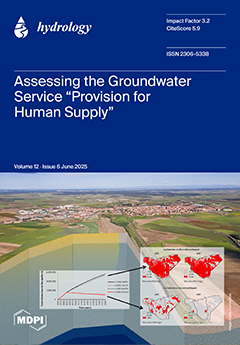Open AccessEditor’s ChoiceArticle
Precipitation-Related Atmospheric Nutrient Deposition in Farmington Bay: Analysis of Spatial and Temporal Patterns
by
Gustavious P. Williams, A. Woodruff Miller, Amin Aghababaei, Abin Raj Chapagain, Pitamber Wagle, Yubin Baaniya, Rachel H. Magoffin, Xueyi Li, Taylor Miskin, Peter D. Oldham, Samuel J. Oldham, Tyler Peterson, Lyle Prince, Kaylee B. Tanner, Anna C. Cardall and Daniel P. Ames
Viewed by 1261
Abstract
This study quantifies the atmospheric deposition (AD) of nutrient loads into the Farmington Bay ecosystem via wet deposition over a three-year period. We analyzed nutrient concentrations from 509 total phosphorus (TP), 507 orthophosphate (OP), and 511 total nitrogen (TN) samples collected at seven
[...] Read more.
This study quantifies the atmospheric deposition (AD) of nutrient loads into the Farmington Bay ecosystem via wet deposition over a three-year period. We analyzed nutrient concentrations from 509 total phosphorus (TP), 507 orthophosphate (OP), and 511 total nitrogen (TN) samples collected at seven locations around the Bay. We estimated AD loads using two different spatial interpolation methods, Kriging and Inverse Distance Weighting (IDW), as well as average concentrations. The loads computed using Kriging and IDW were similar, but the loads computed using sample averages were about 70% smaller. We estimated that annual atmospherically deposited nutrient loads range from 306 to 594 Mg for TN, 73 to 195 Mg for TP, and 43 to 144 Mg for OP. The loads in 2023 were significantly higher than those in 2021 and 2022, a phenomenon we attribute to higher precipitation and a major loading event that occurred on 13 April 2023. Based on comparison with studies concerning nearby Utah Lake, the total loads could be two to three times larger than our estimates. These studies suggest that fine particulate matter may significantly contribute to AD nutrient loads, but these loads are not captured by our sampling method. However, the inclusion of non-water surfaces in Farmington Bay may mitigate this difference.
Full article
►▼
Show Figures





